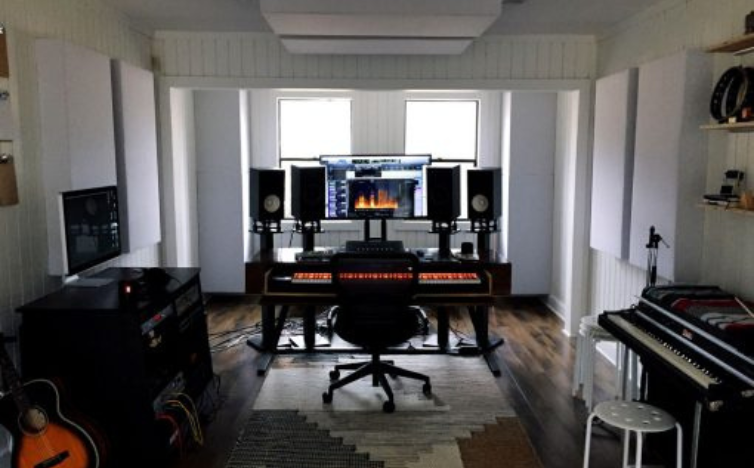Bass traps are essential for improving the acoustics of a room by absorbing low-frequency sounds that can cause muddiness or imbalance. Whether you are setting up a home studio, a theater, or a listening room, proper installation of bass traps can dramatically enhance sound quality. However, many make mistakes during the process, which can limit the effectiveness of these sound-absorbing tools. In this article, we will discuss the most common mistakes to avoid when installing bass traps to ensure optimal results.
Common Mistakes to Avoid

1. Incorrect Placement of Bass Traps
One of the most frequent mistakes is placing bass traps in the wrong location. Many people think that placing them randomly around the room will suffice, but bass traps need to be installed in strategic areas to work effectively. Low-frequency sound tends to accumulate in corners, so installing bass traps in the corners of your room is critical. Focusing on wall-ceiling and wall-floor corners will ensure better absorption of low-end frequencies.
Solution:
Start by placing bass traps in the vertical corners behind the speakers and then consider adding traps to other corners as needed. This approach will ensure that you target the areas where low frequencies build up the most.
2. Using Too Few Bass Traps
Another mistake is underestimating how many bass traps are needed. A single bass trap in one corner won’t solve your bass problems. Low frequencies can bounce around the room and require multiple points of absorption. Installing too few bass traps will only partially improve the room’s acoustics, leaving certain areas with problematic bass buildup.
Solution:
Use multiple bass traps in different corners and possibly along the walls if your budget and space allow. For a small room, at least four bass traps are recommended to create balanced sound control.
3. Not Considering the Room Size
Every room is different, and the size of your room greatly affects how many bass traps you need and where you should place them. Some people assume that what worked in a different room will work in all rooms, but smaller and larger rooms behave differently with low-frequency sound waves. Not accounting for room size when installing bass traps can lead to poor sound absorption.
Solution:
Evaluate the dimensions of your room before installing bass traps. In smaller rooms, low frequencies can be more intense, requiring more bass traps. Larger rooms may require traps placed further apart or in additional locations to achieve the same results.
4. Ignoring Mid and High Frequencies
While bass traps are designed to focus on low frequencies, completely ignoring mid and high frequencies is another common mistake. Without addressing these higher frequencies, you can end up with an acoustically dead or imbalanced room. It’s crucial to maintain a balance of absorption for all frequency ranges.
Solution:
Combine bass traps with other acoustic treatments like panels for mid and high frequencies. This creates a more well-rounded acoustic environment and prevents over-dampening the low-end while neglecting other frequencies.
See Also: How to Choose the Right Bass Traps for Your Space
5. Using the Wrong Type of Bass Trap
Not all bass traps are created equal. Some are designed for specific frequencies, and choosing the wrong type for your room can limit the effectiveness of your acoustic treatment. Foam bass traps, for example, are often not sufficient for lower frequencies, leading to inadequate absorption of the bass.
Solution:
Select bass traps that are made from high-density materials such as fiberglass or rock wool, which are better at absorbing lower frequencies. Do some research on the best type of bass traps for your specific room’s needs before making a purchase.
6. Overlooking Aesthetic and Practical Concerns
Some installers prioritize aesthetics or space-saving designs over acoustic performance, leading to poor installation choices. Bass traps placed solely for visual appeal might not absorb sound properly, and squeezing them into small, confined spaces may reduce their effectiveness.
Solution:
While aesthetics are important, make sure functionality comes first. Choose bass traps that blend with your room design without compromising on their acoustic performance. Always follow the recommended installation guidelines for your specific bass traps.
7. Installing Bass Traps Too Late
Another common mistake is installing bass traps as an afterthought once the room’s design or equipment setup is complete. Doing so may make it difficult to place traps in the optimal locations, forcing you to compromise on sound quality.
Solution:
Incorporate bass trap installation into the early stages of your room design or renovation. This will give you flexibility to place traps where they are most effective without having to navigate around other equipment or furniture.
Call us: Contact DeSound Soundproofing Expert in Dubai For Soundproofing: +971 56 231 4204
Conclusion
Installing bass traps correctly is crucial for achieving the best acoustic results in any room. By avoiding these common mistakes—such as incorrect placement, using too few traps, or ignoring room size—you can significantly enhance your room’s sound quality. Take the time to evaluate your space, choose the right materials, and plan the installation process for a balanced and clear acoustic environment.

